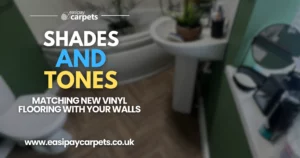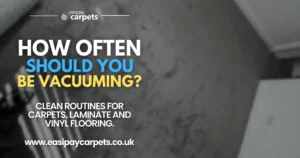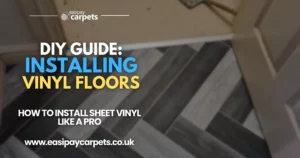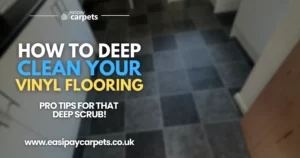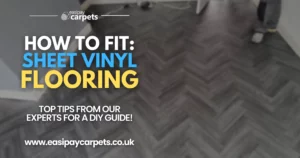
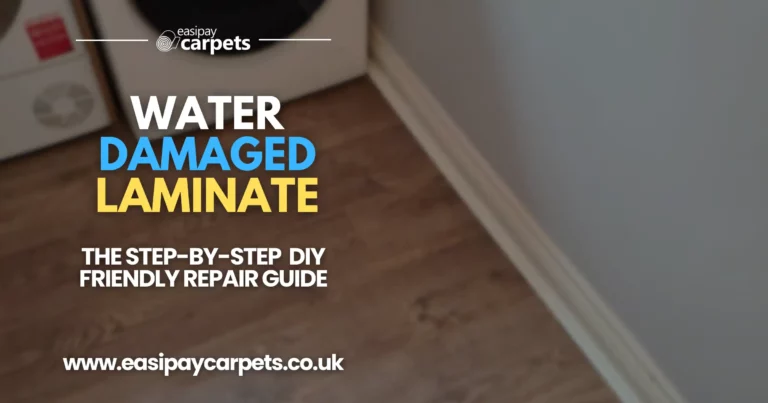
Save Your Laminate Floors: Expert Tips for Water Damage Repair
How to Repair Water-Damaged Laminate Flooring
Laminate flooring is a popular choice for its affordability, durability, and aesthetic appeal. However, water damage can quickly turn a stunning floor into an unsightly problem. Whether caused by a spill, a leak, or high humidity, water-damaged laminate flooring requires prompt attention to prevent further issues like warping, swelling, or mould growth.
In this guide, we’ll walk you through everything you need to know about identifying, repairing, and preventing water damage in laminate flooring.
Understanding Water Damage in Laminate Flooring
Laminate flooring consists of layers of compressed wood fibres with a top layer designed to mimic the look of wood or stone. While the surface is water-resistant, the inner layers are highly susceptible to moisture.
Signs of Water Damage:
- Warped or swollen planks
- Discolouration or stains
- Gaps between boards
- Musty odour
Addressing water damage quickly is essential to maintaining the integrity of your floor.
Step 1: Assess the Extent of the Damage
Start by evaluating the severity of the damage:
- Mild Damage: Limited to surface moisture, minor swelling, or isolated planks.
- Severe Damage: Widespread warping, buckling, or mould growth beneath the boards.
In cases of severe damage, you may need to replace sections of the flooring entirely.
Step 2: Gather Your Tools and Materials
Here’s what you’ll need:
- Replacement laminate planks (if necessary)
- Utility knife
- Moisture barrier or underlayment
- Adhesive or click-lock mechanism (depending on flooring type)
- Crowbar or floor removal tool
- Towels and a mop
- Dehumidifier or fans
Step 3: Dry Out the Area
Before making repairs, ensure the area is completely dry to prevent further damage.
- Mop up standing water immediately.
- Use fans or a dehumidifier to dry the room thoroughly.
- Inspect the subfloor for moisture; if it’s wet, allow extra drying time.
Step 4: Remove the Damaged Boards
Laminate flooring often uses a floating system, making individual boards easier to remove.
- Start by removing baseboards or trim near the affected area.
- Use a crowbar or flooring tool to gently lift the damaged boards.
- Inspect the underlayment for signs of moisture or mould. Replace it if necessary.
Step 5: Install Replacement Boards
- Match the Pattern: Ensure the replacement boards match your existing flooring style and pattern.
- Cut to Size: Use a utility knife to cut boards to the correct size and shape if needed.
- Install: Depending on your laminate flooring, either snap the boards into place or use adhesive for a secure fit.
Step 6: Seal and Protect
- Apply a waterproof sealant to the repaired area for added protection.
- Consider installing a moisture barrier underneath the flooring if you haven’t already.
Preventing Future Water Damage
- Quick Clean-up: Wipe up spills immediately.
- Use Mats: Place mats near entryways to trap moisture from shoes.
- Control Humidity: Use a dehumidifier in humid climates.
- Repair Leaks: Address plumbing issues promptly to prevent water seeping into the subfloor.
When to Call a Professional
While minor repairs can often be tackled as a DIY project, severe damage or mould issues may require professional help. A flooring specialist can assess the damage, recommend solutions, and ensure your laminate floor is repaired correctly.
Easipay Carpets can help you get brand new flooring without the high up-front cost – by simply letting you spread the cost of the flooring over time instead. There’s no interest on our plans so you aren’t spending a penny more than you would buying it outright and we include underlay, door trims, carpet grippers and laminate beading for free. Prices start from just £10 per week!
It starts with a free home appointment and quote, to get booked in at a time that suits you, tap the “Get Started” button below and fill out the contact form!
Still Got Questions? Here's 10 FAQs!
Yes, if the damage is mild, you can dry out the boards and use a waterproof sealant to minimise further damage.
Check for signs of moisture, mould, or warping beneath the laminate. If the subfloor feels soft or looks discoloured, it may need replacing.
Silicone-based sealants work well to protect laminate from moisture. Look for products specifically designed for flooring.
Promptly drying the spill and using fans to reduce moisture can prevent warping in many cases.
Yes, if the underlayment shows signs of mould, swelling, or odour, it should be replaced to prevent future issues.
It can take 24-48 hours to dry laminate flooring completely, depending on the level of moisture and ventilation.
Minor swelling can occur due to humidity changes, but significant swelling often indicates water damage.
Yes, edge damage can sometimes be repaired using wood filler or laminate repair kits.
Remove the affected boards, clean the subfloor with a mould-removing solution, and allow it to dry completely before reinstalling.
Costs vary depending on the extent of the damage, but replacing individual boards is usually more affordable than full-floor replacement.
